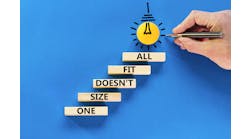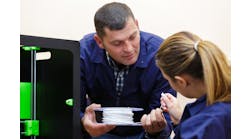Here at Cheetah Learning, we believe a big reason people stop pursuing their personal and professional goals is due to what we call the big "buts." For example:
• I want to adopt a healthier lifestyle — but I don’t have enough hours in the day to exercise.
• I want to learn to play piano — but I’m just not a musical person, and I don’t think I could succeed.
• I want to find a new career path that aligns with my strengths — but I’m scared about what might happen if I quit my current job.
These "buts" are what ultimately keep us from pursuing our dreams and living in our innate genius. In this article, we will help you move past the "buts" that are holding you back from realizing your personal and professional goals. Doing this requires recognizing the attachments in your life, and then letting go of attachments that no longer serve you.
What do we mean by "attachments?" Attachments are those ideas we hold about who we are, what we believe, what we are and aren’t capable of, and how we behave.
An attachment many of us have, for example, is the belief that who we "are" is defined by what we do for work. When you see yourself as "an accountant," "a lawyer," "a teacher," or whatever your profession may be, you limit the range of possibilities and opportunities for yourself. Rather than recognizing your own skills and how they might be relevant to many career paths, you hold on to your attachment to seeing your job title as the core of who you are.
Becoming aware of the attachments you hold requires you to reflect on 4 areas: your actions, strategies, behaviors, and what we call response-ability, or how you respond in various situations.
Ask yourself the following questions:
1. In your daily actions (and reactions), are you spontaneous or are you predictable?
2. In your strategies for dealing with everyday problems, are you more "go with the flow" or do you try to control the situation?
3. As a rule of thumb, do the behaviors you display show judgement or acceptance of other people, ideas, beliefs, and lifestyles?
4. When you respond to new situations, are you generally flexible or more rigid in your expectations?
How you answer these questions helps indicate where you fall on a continuum of attachment; we call these The Five Levels of Attachment.
The Five Levels of Attachment
On one end of the spectrum is Fanaticism. This is when you are predictable in your actions, controlling in your strategies, judging in your behaviors, and rigid in your responses. The Fanatic is so fully attached to their ideas about who they are, what they believe, what they’re capable of, and how they respond in any situation that they severely limit their possibilities and opportunities in life.
At the other end of the spectrum is the Authentic Self. People living in their authentic self can go with the flow, are accepting of new people and new ideas, respond flexibly to unexpected situations, and don’t fall into a rut of predictable actions and reactions.
Figure 1. The Five Levels of Attachment.
When you move away from Fanaticism and toward living in your Authentic Self, you begin to let go of the attachments — the big "buts" — that no longer serve you and your goals.
To learn more about the five levels of attachment, moving toward your Authentic Self, and reaching your career goals through online and classroom courses, visit www.cheetahlearning.com.






